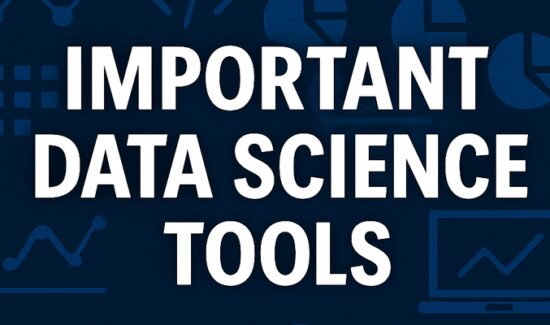The Death of Traditional BI: How AnPaaS Is Revolutionizing Decision Intelligence


Sisense’s Ariel Katz offers commentary on the death of traditional BI and how AnPaaS is revolutionizing decision intelligence. This article originally appeared in Insight Jam, an enterprise IT community that enables human conversation on AI.
For every executive who’s stared at a dashboard wondering ‘so what?’, the $38 billion business intelligence industry is facing an uncomfortable truth: traditional BI is dead. Legacy BI tools with static dashboards and siloed workflows are now relics of the past. People don’t have time to copy data from one tool to another, juggle multiple apps to update a report, or hammer out disconnects between data analysts and product designers. BI was designed for an era of monthly reports, when analysts were the gatekeepers of insight. That world is no more – we need a more powerful approach that supports modern software architectures and Artificial Intelligence.
AnPaaS – Analytics Platform as a Service – isn’t just a trend, it’s a new category that select leaders are helping to define. AnPaaS is emerging as an industry-wide shift in architecture for how business intelligence is delivered and deployed. AnPaaS moves analytics into real-time execution, whether it’s enabling mobile-first decision-making or automating actions through declarative models.
Traditional Analytics at a Breaking Point
While traditional BI excels at historical reporting, it creates friction by forcing users to leave their workflow to access insights. Embedded analytics addressed this through integration, but iFrame implementations often function more like an awkward bolt-on.
Today, organizations struggle to integrate modern analytics with legacy systems. According to 451 Research’s Voice of the Enterprise 2024 survey, only 15.4% of respondents say their strategic decisions are primarily data-driven. AnPaaS helps transform analytics from a separate function into an integrated service layer.
AnPaaS: The Analytics Paradigm For Changing Business
AnPaaS represents a market-wide shift in how analytics are delivered and consumed. It’s a cloud-native industry-wide approach combining advanced AI, robust APIs and flexible data tools to deliver analytics directly within applications, so users can have a dialogue directly with their data.
I’ve long believed this transformation was overdue. Industry analysts are now echoing what we’ve already seen in practice. Krishna Roy of S&P Global Market Intelligence looked at the opportunity for AnPaaS, and recognized the need “to make embedded analytics development easier for developer personas, as well as easier for end users… by providing all the requisite data modeling, data exploration, integration, and preparation, as well as analysis capabilities in one cohesive platform.”
Seven Capabilities That Differentiate AnPaaS
-
Builder Tools for All: AnPaaS democratizes analytics development through multi-layered tools supporting users of all technical abilities by making it easier for users to understand the underlying data.
-
API-First Architecture: Built on robust APIs, AnPaaS enables seamless integration with applications or workflows, allowing AI agents to interact with analytics services without understanding internal data structures.
-
Developer-Friendly Platform: Modern JavaScript SDKs for React, Angular, and Vue streamline integration, and reduce development time while enabling customized solutions.
-
Data Fabric Integration: AnPaaS connects disparate data sources seamlessly, creating a unified but flexible architecture that adapts to changing business needs, like syncing supply chain data with real-time order trends.
-
End-to-End Augmented Analytics: AI-powered automation simplifies the data journey through automated data preparation, code generation, natural language interfaces, and specialized AI agents to avoid the task-switching tax of using multiple systems.
-
Contextual Analytics: Delivers insights precisely where decisions are made, providing relevant information automatically without manually searching spreadsheets.
-
Data Storytelling: Transforms complex data into compelling narratives through natural language generation and AI-driven explanations, making insights accessible to non-technical users by using everyday language to conduct technical data analysis.
The Business Case for AnPaaS Adoption
The shift to AnPaaS can look like a big leap for many traditional businesses. But CEOs that fail to evolve their analytics risk making decisions in the dark, and falling behind competitors who embrace an approach that enables them to act on data in milliseconds. Adopting AnPaaS helps address the following concerns:
Changing Data Consumption Patterns: Today’s business users expect the same intuitive experiences in their professional tools that they enjoy in consumer applications. They demand insights delivered within existing workflows, not in separate dashboards requiring context switching.
Speed to Insight and Action: The window for competitive advantage continues to shrink. Organizations need analytics that compress the journey from data to decision, eliminating friction and accelerating time-to-value. Real-time insights enable AI agents to act instantly, reducing delays in decision-making and capturing opportunities faster—whether adjusting e-commerce inventory based on demand spikes or flagging potential fraud in financial transactions.
Mobile-First Decision Making: Modern business happens everywhere. Users need consistent experiences across devices, ensuring insights are available whenever and wherever decisions are made—whether checking credit reports in a banking app, viewing manufacturing metrics on the factory floor, or analyzing customer data before a sales call.
Declarative Models for Intelligent Automation: AnPaaS supports declarative analytics models that define desired outcomes rather than prescribing how to achieve them. This approach allows AI systems to execute decisions autonomously, improving efficiency and scalability. For example, in enterprise resource planning, a declarative model might specify “maintain optimal inventory levels” rather than manually setting thresholds, enabling AI to dynamically adjust stock based on real-time data.
Seizing the AnPaaS Advantage: Strategic Imperatives for Executives
The organizations thriving in tomorrow’s economy will recognize AnPaaS as essential infrastructure, not optional technology. Just as cloud computing became the foundation for digital transformation, AnPaaS is emerging as the backbone for AI-driven business operations.
As someone who has worked closely with businesses trying to extract value from their data, I’ve seen how AnPaaS transforms the relationship between information and action. Early adopters are already demonstrating measurably faster decision-making and superior customer analytics experiences.
We stand at a rare inflection point where the right infrastructure choice doesn’t just improve operations—it fundamentally redefines what’s possible. The question facing executives isn’t whether to invest in better analytics, but whether to build the intelligent infrastructure that will define business success in an AI-driven economy. This is no longer optional.
As AI becomes embedded in decision-making, AnPaaS will be the foundation enabling that transformation. For executives that want to turn their data into an incisive competitive weapon, the AnPaaS revolution starts with a single decision: Will you be a data leader or a data follower?






























